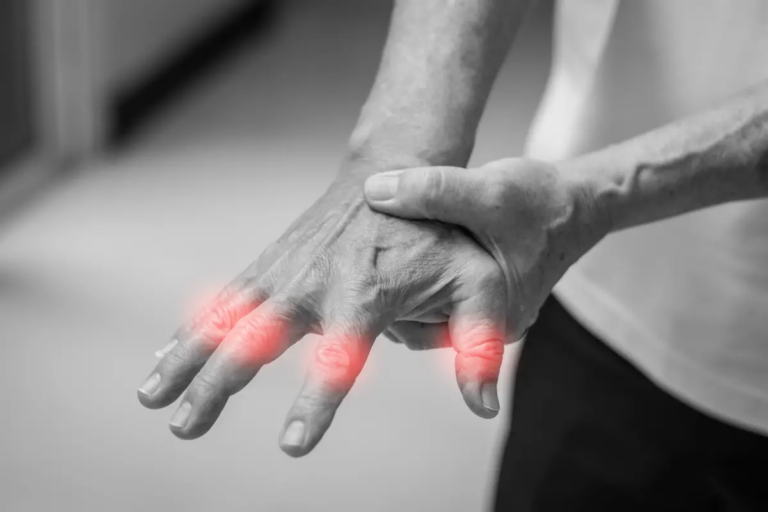In an era where people are making increasingly conscious choices about their skincare, the world of beauty is undergoing a remarkable transformation. The standards for skin health and skincare practices prompt individuals to scrutinize the ingredients they apply to their skin. People are now focusing on clean and conscious beauty. Consumers are now more mindful of what they put on their skin, seeking products that align with their values and preferences.
Within this evolving landscape, homemade skincare solutions have emerged as a testament to conscious beauty choices. Enter the world of homemade frankincense and myrrh lotion – a holistic approach to skincare that empowers individuals to create products tailored to their unique needs and preferences.
Conscious Concerns With Store-Bought Skincare Lotions
When perusing the aisles of skincare products, understanding the intricacies of store-bought lotions becomes paramount. Not every product on the shelf champions natural and safe ingredients; some harbor components that could be potentially detrimental to health. Recognizing these ingredients can empower individuals to make informed choices, discerning between the benign and the potentially harmful.
Phthalates (as ‘fragrance’ or ‘perfume’)
Phthalates, often listed under the ambiguous terms “fragrance” or “perfume,” play a role in prolonging the scent of perfumes in products. But the aromatic allure comes with a caveat. Phthalates stand as endocrine disruptors, with connections to a heightened risk of breast cancer, premature breast development in girls, and reproductive birth defects in both genders. [1]
Benzyl alcohol
Acting as both a preservative and solvent, benzyl alcohol is prevalent in numerous skincare concoctions. However, its omnipresence doesn’t negate concerns. Overexposure has the potential to irritate the skin. And while conclusive evidence linking benzyl alcohol to cancer remains elusive, erring on the side of caution seems prudent. [1]
PEG-100 stearate
Designed to combat dry and irritable skin, PEG-100 stearate is heralded for its moisturizing prowess. But this moisturizer isn’t without its shadows. The lurking concern is its potential contamination with toxic impurities, some of which bear carcinogenic tags. [2]
Parabens (Methylparaben, Ethylparaben, Propylparaben, Butylparaben, Isobutylparaben)
Widely recognized and used, parabens, which are synthetic compounds, extend the shelf life of many beauty and personal care items. Yet, their ubiquity has come under scrutiny. Parabens have the ability to emulate estrogen within the body, instigating possible hormone imbalances. The detection of parabens in breast cancer tissues further amplifies the alarm bells regarding their safety. [3]
Formaldehyde-releasing preservatives (Quaternium-15, DMDM hydantoin, Imidazolidinyl urea, Diazolidinyl urea)
While these chemicals might sound complex, their function is straightforward – they gradually release small formaldehyde quantities to preserve the product’s integrity. Yet, this preservation comes at a cost. Formaldehyde is not only a recognized carcinogen but is also implicated in skin irritations and allergic manifestations. [4]
Retinyl palmitate or retinol (Vitamin A)
Touted as a cornerstone in anti-aging regimens, these derivatives of Vitamin A are popular in skincare solutions. However, their use isn’t without potential pitfalls. When these compounds come in contact with the skin and are subsequently exposed to sunlight, they may amplify the skin’s vulnerability to UV rays, thereby escalating the risk associated with skin cancer. [5]
The Conscious Skincare Solution: Homemade Lotion
For many, this awareness of what you choose to put on your skin has led to a desire for more natural and safe alternatives to homemade skincare solutions. A more holistic approach to beauty that allows us to tap into the wisdom of natural ingredients for a more authentic and personalized beauty regimen.
It also reduces reliance on commercial products filled with synthetic chemicals. The desire for transparency in skincare ingredients that could bring potential harm associated with certain chemicals has contributed to bringing this information to more people.

Benefits of Homemade Skincare Solutions
One of the primary attractions of homemade skincare solutions is the ability to customize products to suit specific skin types and concerns. From controlling the choice of natural ingredients to adjusting formulations for seasonal changes, homemade skincare empowers individuals to address their unique beauty needs.
- Customization to Your Skin Type: Homemade skincare allows you to tailor your products precisely to your unique skin type and concerns. Whether you have dry, oily, sensitive, or combination skin, you can select ingredients that address your specific needs, ensuring a personalized and effective skincare regimen.
- Transparency and Ingredient Control: When you make your skincare products, you have complete control over the ingredients you use. This transparency ensures that you avoid harmful chemicals, allergens, or irritants commonly found in commercial products, promoting skin health and reducing the risk of adverse reactions.
- Freshness and Potency: Homemade skincare products are prepared in smaller batches, which means they are typically fresher and more potent than their mass-produced counterparts. This freshness ensures that the active ingredients retain their effectiveness, delivering better results for your skin.
- Cost-Effective: Crafting your skincare products can be cost-effective in the long run. While there may be an initial investment in acquiring ingredients and essential oils, these supplies often last for multiple batches, saving you money compared to regularly purchasing commercial products.
- Reduced Environmental Impact: Homemade skincare is often more environmentally friendly. You can select sustainable, eco-conscious ingredients, reduce packaging waste, and minimize your carbon footprint by making products in reusable containers.
- Empowerment and Creativity: Creating your skincare products is not just about nourishing your skin; it’s a creative and empowering process. You get to experiment with various natural ingredients, scents, and textures, allowing you to enjoy the satisfaction of crafting something unique and tailored to your preferences.
By embracing homemade skincare, you unlock a world of benefits that go beyond beautiful skin. You gain control, promote transparency, and contribute to a more sustainable and personalized approach to self-care.
The Wonders of Homemade Frankincense and Myrrh Lotion
Within this realm, myrrh and frankincense have distinguished themselves for their exceptional ability to enrich and rejuvenate the skin.
The Skin Benefits of Frankincense and Myrrh
Frankincense offers a range of skin benefits, including fortifying the skin’s strength, enhancing tone and elasticity, bolstering defenses against bacteria and blemishes, and promoting a youthful appearance over time. It is known to firm and uplift the skin, minimize the visibility of scars and acne, and accelerate the healing of wounds.
Additionally, frankincense can be advantageous for fading stretch marks, surgical scars, pregnancy-related marks, and healing dry or chapped skin. A review featured in the Journal of Traditional and Complementary Medicine highlights its ability to diminish redness and skin irritation while fostering a more even skin tone. This soothing effect on irritated skin is attributed to the pentacyclic triterpene (steroid-like) structure found in Frankincense oil, as indicated by studies. [6]
On the other hand, when you use myrrh oil in your skincare routine, it becomes a superhero antioxidant that helps your skin stay healthy by fading those pesky blemishes. Plus, it aids in soothing irritations, itching, and even conditions like eczema. Myrrh oil provides strong antibacterial properties, but it also oxygenates your skin. The process helps increase your body’s production of elastin and collagen, which naturally tighten the skin. This means myrrh essential oil combats signs of aging, including fine lines and wrinkles.
Homemade Frankincense and Myrrh Lotion Recipe
Here’s a simple recipe for Frankincense and Myrrh Lotion:
Ingredients:
- 1/4 cup olive oil
- 1/4 cup coconut oil
- 1/4 cup beeswax
- 1/4 cup shea butter
- 2 tbsp Vitamin E
- 12 drops frankincense essential oil
- 12 drops myrrh essential oil
- BPA-free lotion dispenser bottle
Directions:
- In a bowl, combine coconut oil, olive oil, beeswax, and shea butter. Place this bowl in a saucepan filled with water.
- Heat the saucepan on medium, allowing the ingredients to meld together.
- Once blended, transfer the mixture to the refrigerator. Let it solidify for about an hour.
- Using a mixer, whip the chilled blend until it achieves a creamy texture.
- Incorporate the essential oils and Vitamin E, ensuring an even mixture.
- Transfer your homemade lotion into a BPA-free bottle, storing it in a cool location.
By crafting your own skincare products like Frankincense and Myrrh lotion, you gain not only control over the ingredients but also the peace of mind that comes from knowing exactly what you’re applying to your skin. However, while homemade remedies have their benefits, it’s essential to consult dermatologists or healthcare professionals for severe skin concerns.

How to Treat Allergic Reactions to Skincare Products
Allergic reactions to skincare products can happen to anyone. If you suspect such a reaction, here’s a quick guide:
- Cease using the product immediately to prevent further irritation.
- Gently rinse the affected area with cold water to remove any remaining product.
- Apply a cold compress for relief from heat and itching.
- Apply aloe vera gel to soothe itching and promote healing.
If your symptoms fail to improve within a few hours, it’s crucial to seek prompt medical attention. Monitoring your skin’s response to the allergic reaction is essential, and taking swift action by seeking medical help when needed ensures that you receive the appropriate treatment to address the situation effectively.
On the other hand, to avoid skin allergies, it is better to identify the specific ingredient responsible, which may take time, especially for complex product formulations. You may request a skin prick allergy test from your GP to identify potential food-related allergens.
My Personal RX on Skincare From Nature’s Vault
I’ve always marveled at the innumerable gifts nature offers us, especially when it comes to caring for our skin. The environment is replete with natural elixirs that nourish, protect, and rejuvenate, providing an organic solution to many of our skin woes. It’s truly remarkable how the earth’s bounty can seamlessly merge with science to give our skin the tender love it deserves.
- Go Natural: Always opt for skincare products that are free from harmful chemicals. Embrace ingredients you can recognize and pronounce.
- Sip for Skin: Drink herbal teas like chamomile or green tea. They’re packed with antioxidants that can help soothe the skin and fend off free radicals.
- Embrace the Sun Smartly: Spend some time outdoors daily, but remember to protect your skin with a good sunscreen. The sun gives us vitamin D but can also be harsh on unprotected skin.
- Embark on a Holistic Healing Journey: Discover a holistic approach to health and wellness that integrates the best of nature and scientific knowledge. Experience skin transformation from within through my free comprehensive Protocol.
- Rejuvenate with Collagen: Let your skin bask in the rejuvenating powers of collagen. Boost hydration, improve elasticity, and celebrate your skin’s natural glow with my specially formulated Youth Collagen.
Taking good care of our skin is important. Being self-aware and informed about our skin’s needs is essential for maintaining its health and vitality, whether it’s opting for homemade remedies or selecting the products that best align with our unique needs and values.
Sources:
- EWG Skin Deep® Cosmetics Database. (n.d.). EWG. https://www.ewg.org/skindeep/
- Jang, H., Shin, C. Y., & Kim, K. (2015). Safety evaluation of polyethylene glycol (PEG) compounds for cosmetic use. Toxicological Research, 31(2), 105–136. https://doi.org/10.5487/tr.2015.31.2.105
- Safe Cosmetics. (2022, July 7). Parabens – safe cosmetics. https://www.safecosmetics.org/chemicals/parabens/
- Safe Cosmetics. (2022a, April 26). Formaldehyde And Formaldehyde-Releasing Preservatives – Safe Cosmetics. https://www.safecosmetics.org/chemicals/formaldehyde/
- EWG Skin Deep® | What is RETINYL PALMITATE (VITAMIN A PALMITATE). (n.d.). EWG. https://www.ewg.org/skindeep/ingredients/705545-RETINYL_PALMITATE_VITAMIN_A_PALMITATE/
- Hamidpour, R., Hamidpour, S., Hamidpour, M., & Shahlari, M. (2013). Frankincense (乳香 rǔ xiāng; Boswellia species): From the selection of traditional applications to the novel phytotherapy for the prevention and treatment of serious diseases. Journal of Traditional and Complementary Medicine, 3(4), 221–226. https://doi.org/10.4103/2225-4110.119723
- Myrrh oil – Uses & Benefits of the most widely used oil in the world. (2018, February 8). https://www.newdirectionsaromatics.com/blog/products/all-about-myrrh-oil-and-resinoid.html





















